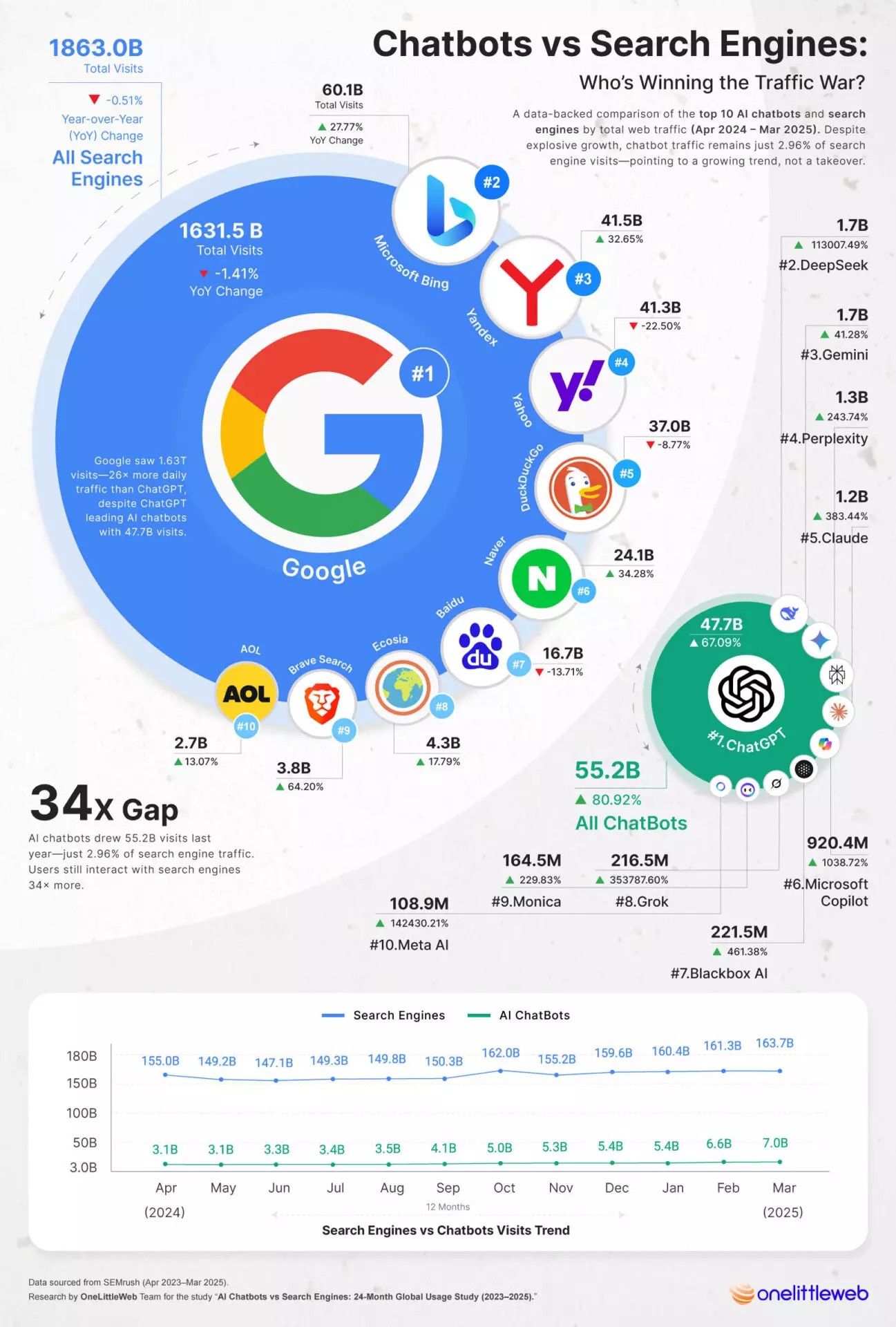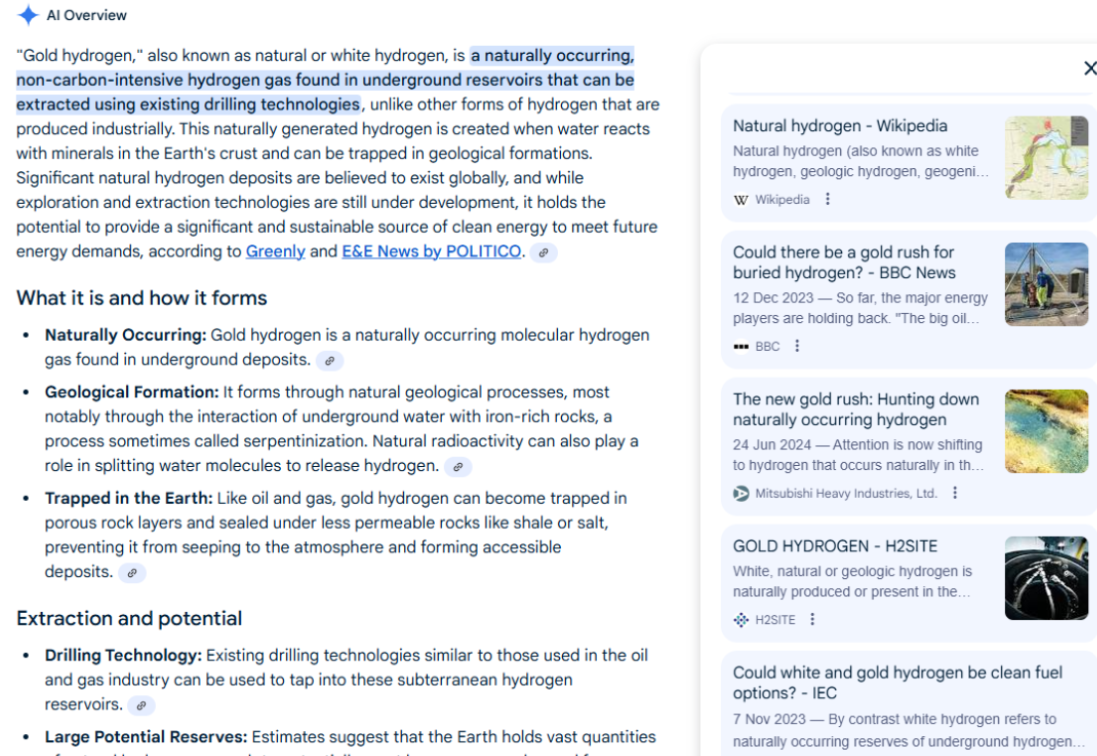How do you get cited by an AI platform?
Search engine optimisation (SEO) has been an established practice for decades. Yet, getting your content picked up by ChatGPT, Perplexity or Claude is still something of a “dark art”.
Today, the share of people who use these Large Language Models (LLMs) as search interfaces is only a fraction of the visits traditional search engines garner. But this is changing rapidly.
Compared to plateauing visitor numbers for search engines, use of AI platforms skyrocketed by more than 80% in the year up to April 2025. Based on this trajectory, ChatGPT could surpass Google by late 2026.

Source: Onelittleweb
In this blog, you will learn:
-
How does search in an LLM work vs. Google?
-
What impact will the shift from traditional search to LLMs have?
-
What is LLM seeding?
-
What kind of content works for LLM seeding?
-
Where should you seed content to get cited by LLMs?
-
What are the benefits of LLM seeding?
How does search in an LLM work vs. Google?
Compared to the blue underlined links we’ve all got accustomed to, LLMs provide direct answers to questions, which is why they are sometimes referred to as ‘answer engines’. Their responses may include links, but users don’t necessarily need to click on them to find the answers they are looking for.
What impact will the shift from traditional search to LLMs have?
You only have to look at Google’s own “AI Overviews”, presented at the top of its traditional SERP, to get an impression of what the future may look like – and its impact.
Studies have shown that for some previously top-ranked websites, the drop-off in click-throughs has been around 80%. Some outlets have reported even steeper declines. As more search traffic shifts to dedicated LLM platforms, search traffic will undoubtedly fragment further.
The question is: how can content marketers fight back? By turning their attention from SEO – getting a search engine to display links to their site – to getting cited by LLMs.
What is LLM seeding?
Enter LLM seeding: creating and publishing content in the formats and places that LLMs are most likely to scrape and cite. And while people may or may not click through to your site, the brand mention in itself has sticking power.
So, you’re no longer just optimising for rankings – though this will stay with us for some time – but, increasingly, for citations. Those citations will continue to build and add to your brand awareness over time.

What kind of content works for LLM seeding?
With the rapid increase in LLM usage, content marketers need to adapt quickly to stay ahead. The good news is that we already have a solution – as in SEO, creating ‘best answer content’ is also the way to get LLM citations.
Research indicates LLMs prefer detailed, structured, fact-based content from trusted sources, aligning with the E-E-A-T principle (Experience, Expertise, Authority, Trustworthiness).
But there are also some peculiarities to be aware of.
-
LLMs' use of natural language processing and contextual analysis makes formats such as guides, FAQs, tables, listicles and visuals well-suited to their research style.
-
Adding semantic and Schema markup can further enhance discoverability.
-
Focusing on ‘long tail’ search intents and niche topics can further help brands garner LLM citations (see example above).
-
Offering authentic, unique insights is crucial as LLMs have been shown to favour fresh, original content over recycled, AI-generated material.

Source: Semrush
Where should you seed content to get cited by LLMs?
If you’ve ever used an LLM, you’ll notice they have a preference for trusted independent outlets. While this makes it somewhat harder for commercial organisations to get cited for their owned content, it also opens several other doors for boosting a brand’s visibility to LLMs:
-
Participating in public content hubs and social media (e.g., LinkedIn, Reddit, Quora (see chart above).
-
Contributing to trade and business media by authoring articles.
-
Providing expert commentary through interviews.
-
Creating editorial- or research-led microsites, as these are more likely to get picked up by LLMs than heavily-branded corporate pages.

Source: Semrush
What are the benefits of LLM seeding?
Adapting content for LLMs boosts brand visibility and credibility as users transition from link-clicking to AI platforms.
An added advantage is that 90% of ChatGPT citations, for example, come from sites ranked 21st or lower by traditional search. So, while competitors may rank higher, your site could be cited more often – if your answers better match users' queries and intent.
This shows that adopting an LLM seeding strategy isn't just a necessity but can help carve out distinct competitive advantages.
Author: Andrea Willige

